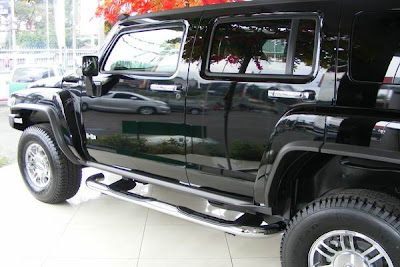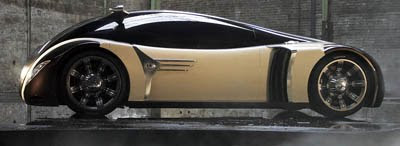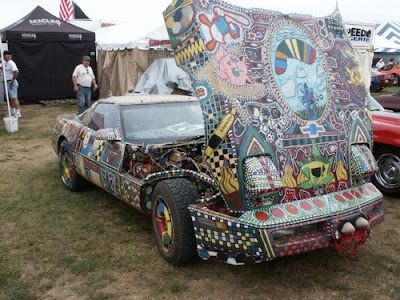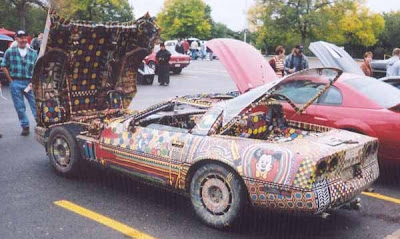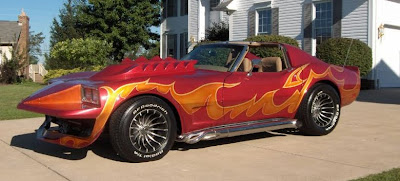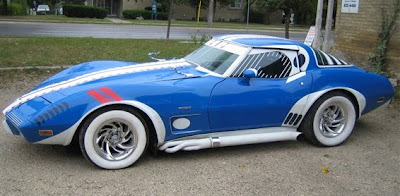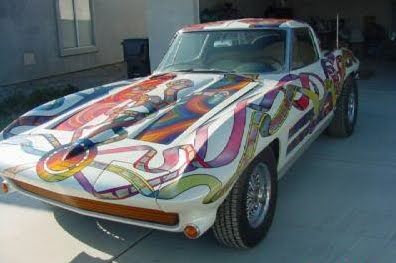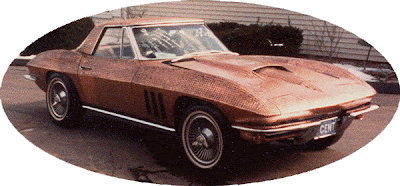
The 308 RC Z concept car is a new Peugeot interpretation of driving pleasure. The car is a 2+2 coupé, with true versatility and at the same time a style that is modern, original and well-balanced.
Using the 308 as a blueprint.
* to adopt a particularly stylish front design;
* to share a large number of components already developed for the hatchback, therefore simplifying the production of this coupé;
* to capitalise on the hatchback's strong points, which become even more effective in the 308 RC Z concept car (for example, suspension components, wheels, certain equipment items and the fl owing design of the fascia panel).
Its taut lines and streamlined design ensure an efficient aerodynamic specification (a SCx of just 0.65), improving performance, fuel consumption and therefore helping to protect the environment due to the reduced CO2 emissions.
With a length of 4.276 (same as the hatchback), a width of 1.840 (25 mm more than the hatchback) and a height of only 1.320 m, the proportions of the 308 RC Z concept car combines a very dynamic design with a high level of road holding.
Exterior stylingThe particularly stylish design of the front of the 308 blends brilliantly with the proportions of this concept car.
From the side, the vehicle displays a strong profile with its prominent front wings, deeply sculpted sides, and particularly generous rear wings. The doors raise the visual profile, creating a link between the sloping front design and the curvaceous rear design.
The end result, firmly sitting on 19 inch wheels, suggests power, strength and dynamism, like an animal ready to pounce.

The specific shape of the rear window required the use of polycarbonate instead of glass. The two curved sections emerging from the roof give the vehicle an original appearance and contribute greatly to its aerodynamic efficiency. The design of the tailgate assists the airfl ow over the rear of the vehicle, while the shape of the rear of the vehicle provides sufficient down force onto the rear suspension to eliminate the need for a rear spoiler, thereby preserving the purity of the vehicle's lines.
The Peugeot Lion badge is displayed in a U shaped panel in the centre of the tailgate, and is backlit at night. In addition, simply by pressing the lion badge, opens the tailgate.
The rear lights are mounted fl ush with the car's wide rear wings. Fitted with light emitting diodes (LEDs), they have a ruby red finish combined with a stylised translucent section which contains the direction indicator.
Two centrally mounted exhaust pipes are integrated into the wraparound lower rear panel. To achieve this, the rear exhaust silencer has been located in a transverse position where it also serves as an aerodynamic diffuser, but still allows sufficient space for the storage of a spare wheel.
The rich metallic grey exterior body colour is created by a special process using finely milled metallic particles. This gives the impression that the vehicle has been formed from a single block of metal, enhancing the purity of the car's lines and the styling of the bodywork to remarkable effect.

The interior
The fascia panel in 308 RC Z concept car has been taken directly from the hatchback. A pure, elegant and fl uid design, it allows a particularly clear view of the outside thanks to its sloping design which complements the vehicle's large front windscreen. It offers a high level of interior brightness, improved visibility and an overwhelming feeling of space.
The entire fascia panel is trimmed in leather, while the use of chrome, aluminium and black lacquered fittings creates a sporty, upmarket impression.

Another sign of the vehicle's exclusive nature are the bucket type front seats with polished aluminium eyelets, the style of which is also refl ected in the design of the inner door panels. The ergonomically designed driver's seat ensures the driver is firmly in control of the vehicle.
At the rear there are two occasional seats trimmed in leather, both of which can be folded. The vehicle therefore offers real modularity and great versatility.
The engine
The 308 RC Z concept car is powered by a 1.6 litre THP engine developed from the EP6DTS engine designed and developed via the collaboration between PSA Peugeot Citroën and the BMW Group, where it is fitted to the 207 RC, with a power output of 128 kW (˜175 bhp).
However, the 1.6 litre THP engine, as a result of new engine management software specially developed for the concept car, now produces a maximum power of 160 kW (˜218 bhp).
It is characterised by incredible fl exibility, thanks to its maximum torque of 280 Nm produced at a low engine speed (300 Nm in overboost). These values ensure remarkable responsiveness under all driving conditions.
Its innovative Twin-Scroll turbocharger optimally pairs the exhaust gases fl owing from two cylinders to ensure maximum fl ow onto the turbine, while its high-pressure direct petrol injection system improves combustion and overall engine efficiency.
The engine is coupled with an entirely new 6 speed manual gearbox.
This unit helps to give the 308 RC Z a particularly efficient compromise between performance and fuel consumption. For example, its maximum speed of 235 km/h is attained in sixth gear and it takes only 7.0 seconds to go from 0 to 100 km/h. In gear acceleration is impressive: only 7.5 seconds in 5th gear from 80 to 120 km/h. At the same time, fuel consumption is very reasonable with 6.7 litres/100 km in the combined cycle, or just 160 g/km of CO2 emissions.
 Wheels and suspension
Wheels and suspensionIn the tradition of Peugeot concept cars there is a linked front suspension employing the widespread use of aluminium to reduce the vehicle's overall weight.
This set up ensures exceptional road holding, excellent steering accuracy and great feedback intensifying the overall driving sensation.
The rear suspension, derived from the hatchback, consists of a torsion-beam, two rear suspension arms and an integral anti-roll bar. It has been specially modified to take account of the wider vehicle tracks. Indeed the front and rear tracks have been increased by 59 mm compared to the hatchback, and also the fitment of wider tyres, ensures maximum body rigidity, precision and vehicle stability.
Braking relies on large (360 mm) diameter ventilated discs at the front with four piston calipers.
Polished split rim 19'' alloy wheels are fitted with Michelin Pilot Sport PS2 245/40 R19 tyres.
SafetyEven for a unique model, Peugeot's designers do everything they can to make their dreams become a reality and leave nothing to chance. Safety is also made a top priority.
While the exceptional road holding of the 308 RC Z concept car forms the basis of its primary safety, it is supplemented by safety equipment borrowed from the 308 hatchback, Lane Departure Warning System (LDWS) and the directional bi-Xenon headlamps.

